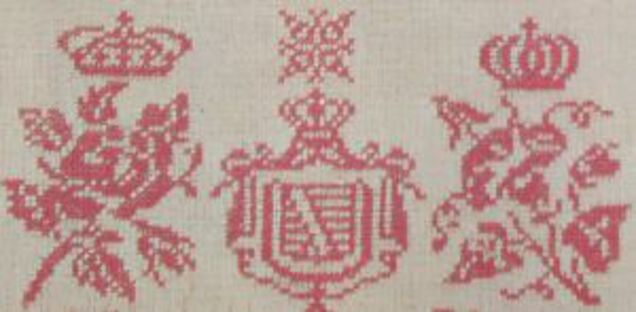Ida 1872
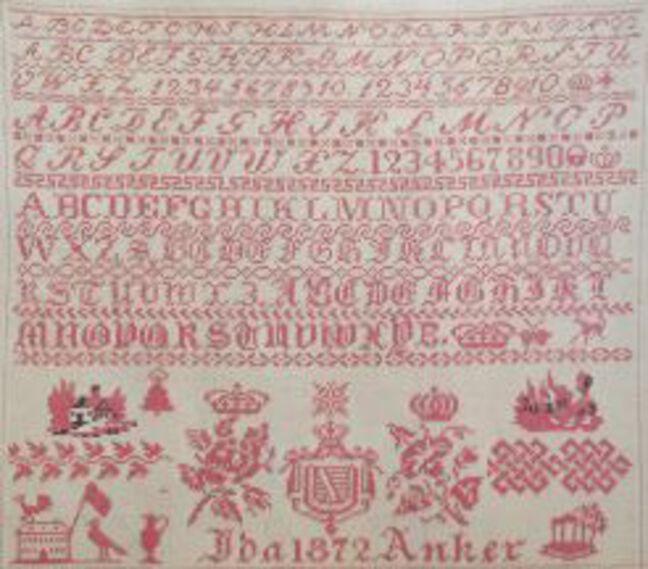
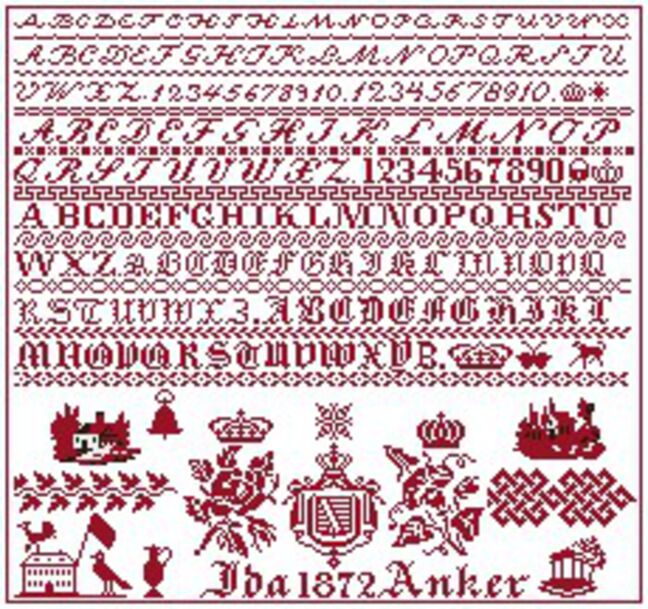
In most European countries, needlework classes were standardized at the end of the 19th century. The needlework samplers were mainly used to impart various techniques. Cross-stitch samplers in Turkish red predominate, starting almost always with different rows of alphabets and numbers. The existence of a large number of these rows points to a state or denominational school trying hard for the education of the poor. Europewide can be seen that the needleworker marked her name, the year, the city, the school and the teacher. But there is absolutely no conformity. Each sampler was a very individual work of the needleworker and different from her schoolmate’s work.
Six alphabets and three rows of numbers in cross-stitch decorate Ida’s sampler from the needlework lessons in the year 1872. Nine different borders form line by line. Ida’s work is calmly arranged in the lower third: She formed a central section with the Saxon coat of arms and equally distributed the two stylized flowers (rose and vetch), crowns, small buildings, tendril and basketwork. She fell back on a lot of motifs from a widespread needlework pattern book published by Heinrich in Berlin.
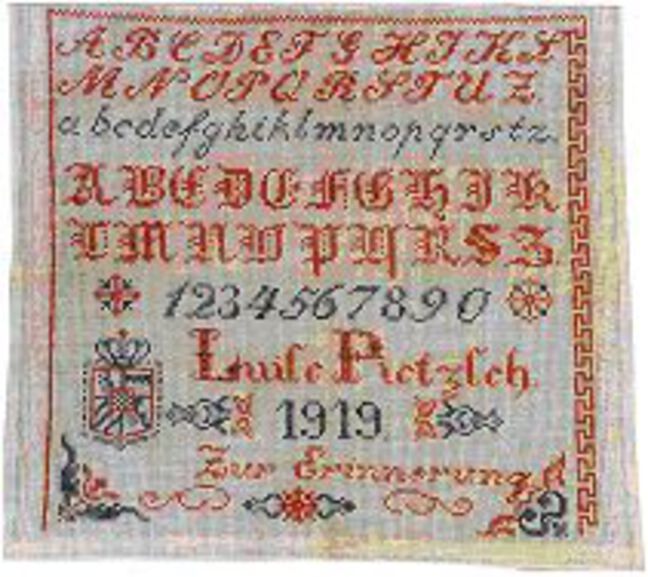
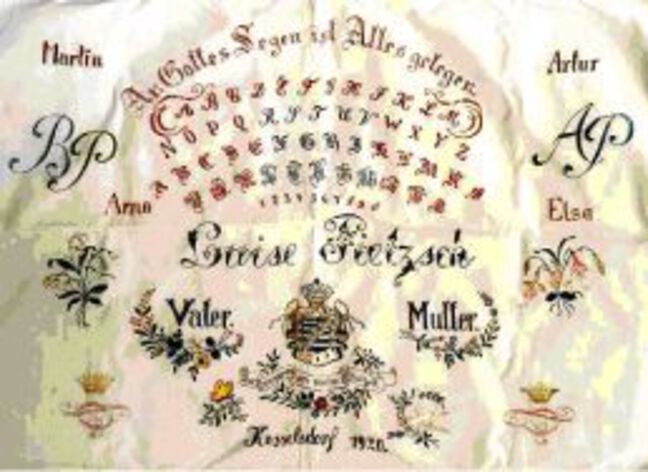
We can only guess whether she has worked a whitework or a lace sampler at a later date like Louise.
The finest German whitework samplers come from Saxony, after more than a hundred years of tradition of the famous "Dresden lace". The Encyclopédie by Diderot and d'Alembert from 1751 says: "The highest estimated muslin work is those from Saxony, but just as fine work is made elsewhere, especially in France, the reputation of the Saxon workers is undoubted, however.
Crosses: 226 x 212
Size: 39,5 x 34 cm
Stitches: Cross stitch
